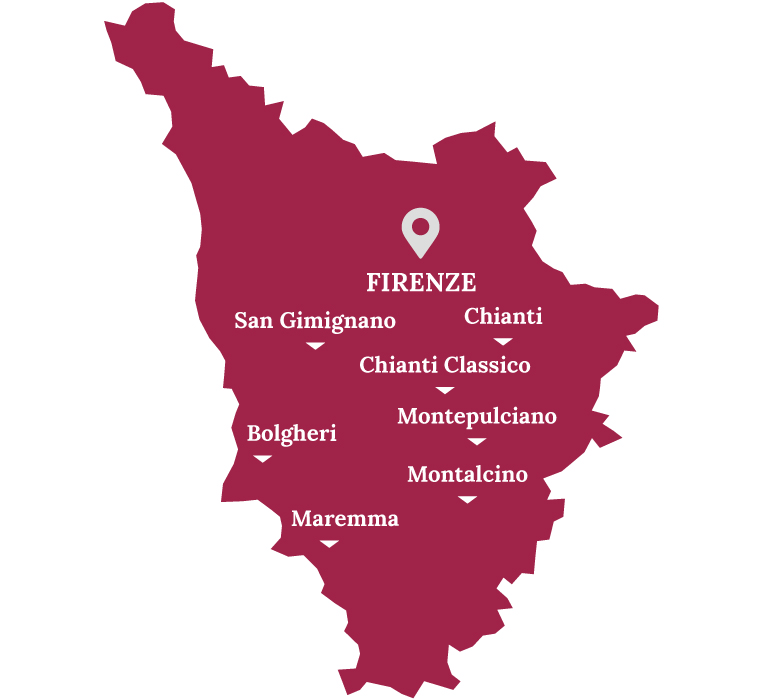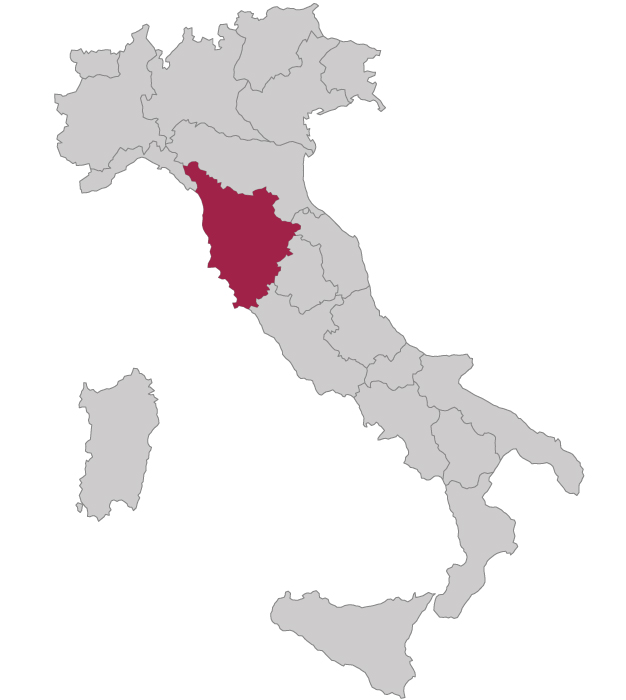When the first blockbuster wines on the Tuscan coast rose to fame in the 1970s, Bolgheri was already a household name to Italians, for other reasons: one hundred years earlier – in 1874 – a great poet, Giosuè Carducci, wrote one of Italy’s most famous poems of all times, beginning I cipressi che a Bolgheri alti e schietti…. Every schoolchild in the country had seen, in her mind’s eye, the double row of cypress trees of Davanti San Guido, taking in their “fragrant shade” and the breeze coming off the sea. What is good for poets has proven good for wines too as many great Cabernets and Bolgheresi/Bordeaux blends came onto the scene. Bolgheri vineyards run parallel to the beaches of northern Maremma, in the Livorno province, near Castagneto Carducci. East of the vineyards, a series of hills go from Bibbona to Castagneto, sheltering them from the cold northerly winds and channeling refreshing breezes in the summer. In addition, the area enjoys beneficial sea breezes from the Tyrrhenian Sea, with diurnal temperature changes peaking in August and September. This leads to slow, full, gradual grape ripening and excellent sugar levels, perfect polyphenols and lovely aromas as well as high acidity, essential for the wines’ balance. Another microclimatic advantage in Bolgheri is the intensity of the light: both direct sunlight and reflected sunrays from the sea, west of the vineyards. Geologically, soils vary from stony, alluvial terrain and Eolithic, marine terrain, with sandy, calcareous and clayey soils and volcanic rock.When the first blockbuster wines on the Tuscan coast rose to fame in the 1970s, Bolgheri was already a household name to Italians, for other reasons: one hundred years earlier – in 1874 – a great poet, Giosuè Carducci, wrote one of Italy’s most famous poems of all times, beginning I cipressi che a Bolgheri alti e schietti…. Every schoolchild in the country had seen, in her mind’s eye, the double row of cypress trees of Davanti San Guido, taking in their “fragrant shade” and the breeze coming off the sea. What is good for poets has proven good for wines too as many great Cabernets and Bolgheresi/Bordeaux blends came onto the scene. Bolgheri vineyards run parallel to the beaches of northern Maremma, in the Livorno province, near Castagneto Carducci. East of the vineyards, a series of hills go from Bibbona to Castagneto, sheltering them from the cold northerly winds and channeling refreshing breezes in the summer. In addition, the area enjoys beneficial sea breezes from the Tyrrhenian Sea, with diurnal temperature changes peaking in August and September. This leads to slow, full, gradual grape ripening and excellent sugar levels, perfect polyphenols and lovely aromas as well as high acidity, essential for the wines’ balance. Another microclimatic advantage in Bolgheri is the intensity of the light: both direct sunlight and reflected sunrays from the sea, west of the vineyards. Geologically, soils vary from stony, alluvial terrain and Eolithic, marine terrain, with sandy, calcareous and clayey soils and volcanic rock.
Map of the region

